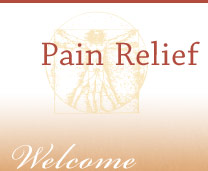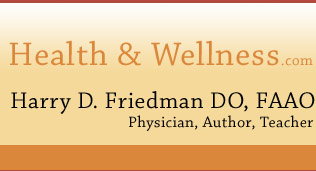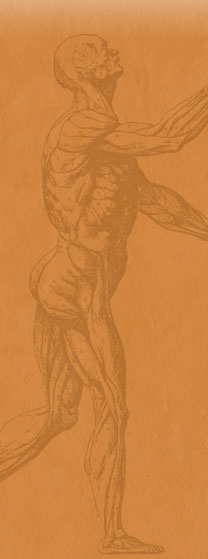19/20. In terms of reproducibility of findings in Functional Methods, are there studies about inter-examiner reliability? What about effectiveness of Functional techniques?Yes, Dr. Johnston spent a lot of his latter years correlating manual motion testing findings with surface EMG measurements. There was strong evidence in these studies that motion tests correctly identified disturbances in muscle firing. Interexaminer studies are fewer to begin with because they are more difficult to design and implement. Finished studies of this type rarely show any effective inteerexaminer agreement between examiners using any type of manual testing procedures. (See Seffinger’s review in Spine)
Clinical studies are even more rare because in order to test treatment responses you must first establish validity of the methods (tests) used to make the diagnosis before and after treatment is rendered. I have a fairly small study (n=76) that documents significant changes in screening exams performed before and after the treatment of just one costovertebral linkage dysfunction. I have not been able to publish it because no one accepts the validity of the methods used to screen the patients or assess the linkage dysfunction. So I had to go back and do the studies to train students in functional screening and diagnosis and then see if they agreed when performing these procedures, blinded, on the same subject. They did and so now I have to write this up and get it published because it is so important to establish the validity of our assessment methods, that is the first step before clinical studies can be properly done. Dr. Johnston knew this and that is why he never did any clinical outcome studies, he published mostly descriptive research on palpation, physical exam and motion testing procedures.
21. Functional Methods are only one of many approaches which apply an indirect technique or which use the concepts “ease” and “bind”. In America they have many names and are actually quite well known and popular. Even cranial and myofascial approaches readily incorporate these ideas into their diagnostic and treatment protocols. I don’t really think it is that different in Europe. William Johnston and his Functional Methods are relatively unappreciated though he is well known for his research. This is true in America as well as internationally. I think its just a matter of doing more teaching and marketing the benefits of Functional Methods to get the word out, Dr. Johnston spent most of his time and energy doing research, he didn’t focus on marketing his ideas or pushing his views into the limelight…
22/23/24. Why are Dr. Johnston and Functional techniques relatively unknown? Where can one study these approaches? I think that Dr. Johnston’s work developing Functional Methods has delivered a tidy and fairly complete package to the world of Osteopathic patient care. Though more surely remains to uncover in the unique organization of the motor control system, there is enough in his published work to keep us all busy. This brings us to the question of whether he reached his “target”, I think not, because he wanted so much more in the areas of education and research. Now it is up to us to take to heart Dr. Johnston’s methods and see how they contribute to our development as Osteopathic practitioners how they impact our clinical practice. For myself that means continued educational offerings and research in the areas of inter-examiner agreement and clinical efficacy.
My work in Germany, France and Australia teaching Functional Methods has been met with great enthusiasm and already we have begun to work co-operatively collecting data to support a scientific basis for this work. These courses are difficult on students in s way because they have to really put aside what they have already learned in order to palpate and develop new approaches to problem solving in the musculoskeletal system. What we have already learned shapes the way we think and what we feel with our hands in very insidious ways. It is more difficult to really set them aside than you might imagine.
Courses are regularly offered by the DAOM in Hamm Germany as well as in Alsace France through GEOS. The basic course is offered in 2 parts 20 hours each. The VOD will be having some Functional course offerings at this year’s conference in Schlangenbad as well. I do make special arrangements to teach for any professional groups requesting. Dr. Eland is the Department chair at Ohio University College of Osteopathic Medicine and spends most of his time teaching Functional Methods to his students, lucky for them! We have taught together in the past but currently have no plans to do a course together. But that could easily change!
24. Bill Johnston’s website provides comprehensive information about his life and work, how are you and Dr. Eland working together to continue his worl ?The website was the brainchild of Gail Johnston and Merilyn Brooks, Dr. Johnston’s daughters. Dr. Eland and myself were consulted about various aspects of its content and organization but really had little to do with getting it started. We will continue to work together to supplement the website and keep updated with dates of courses, research projects etc…Dr. Eland was instrumental in rewriting the Functional Methods book. His experience teaching students for so many years helped to expand areas of the book that were too short or unclear and to reorganize the book so that material flowed better from one chapter to the next. We added many new images to help illustrate points that were difficult to visualize. Also, we added some new material presenting diagnosis and treatment of costovertebral linkage dysfunctions and a few pieces on anterior costal cage diagnosis and treatment. The book is really intended to be a course manual and for reference after taking the course. It is the only authoritative text on the subject and is essential for anyone attempting a serious understanding of Functional Methods. There is no plan to do a third edition.
Thank you for this opportunity to discuss my ideas and feelings concerning William L Johnston DO, FAAO. It is my honor and privilege to be able to continue his work and have the chance to teach and study with so many interested practitioners and students from around the world!
Harry D. Friedman DO, FAAO



